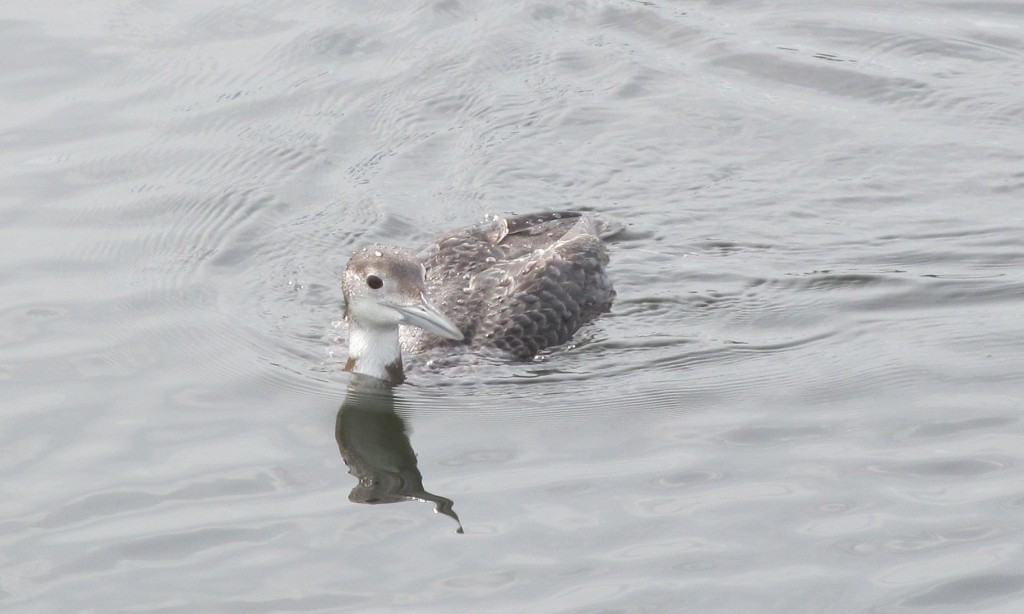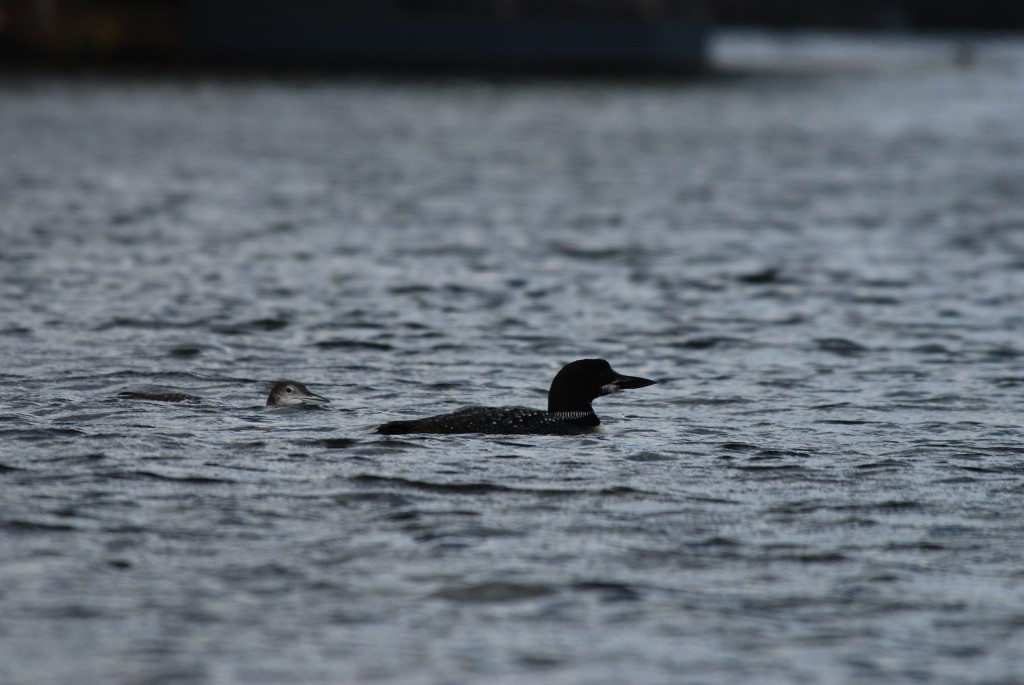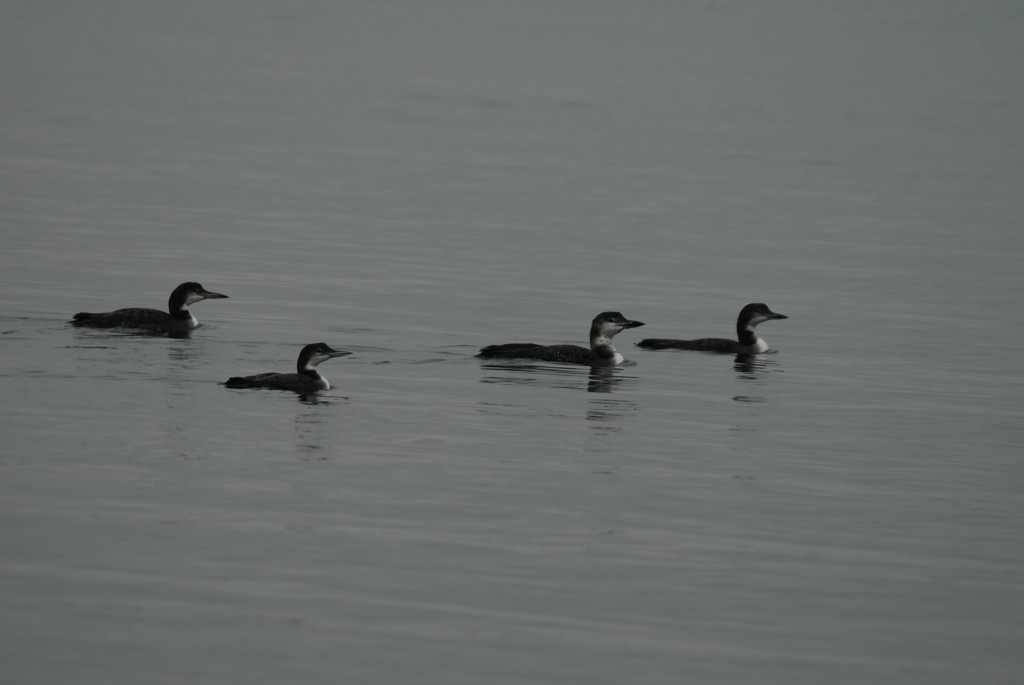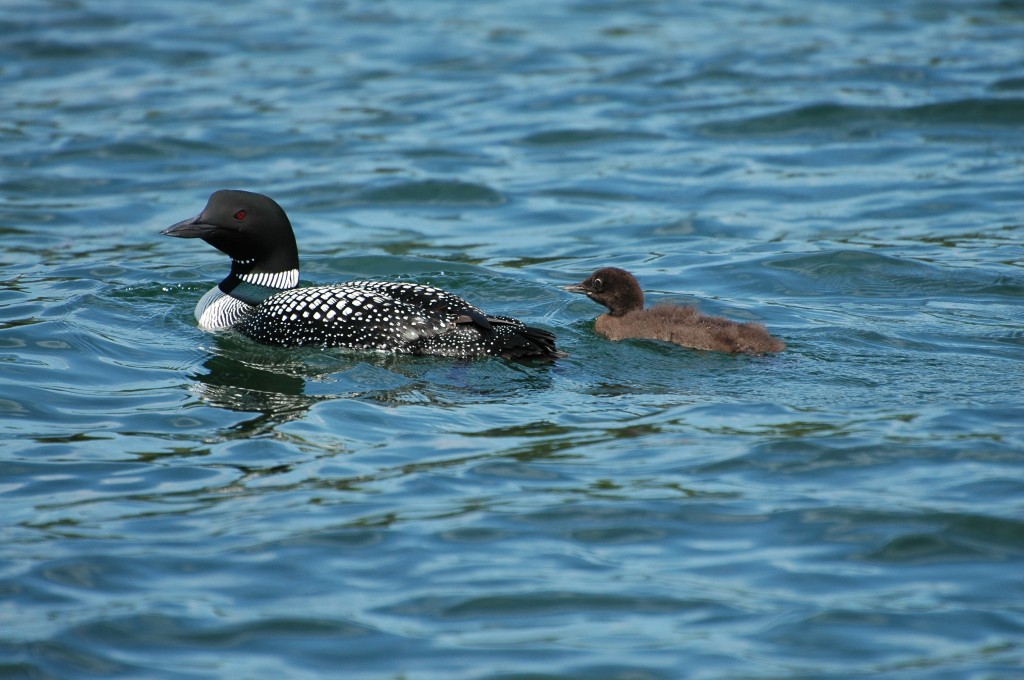(See member picture gallery below). Back in 2007, February’s bird of the month, Common Loon (Gavia immer), was removed by the American Ornithological Union from its long-standing place at the beginning of our field guides, to be replaced by the Anatidae (Ducks, Geese, Swans). Nevertheless, it is still a regular winter visitor to Palm Beach County. Anyone who has walked along the Lake Worth Lagoon between September and May is likely to have seen this large, thick-billed bird with a blue-gray bill. It is nearly exactly the same size as our year-round resident Double-crested Cormorant (32” in length), and they reside in similar situations (the Intracoastal Waterway and surrounding coastal waters). Nonetheless, they are simple to differentiate even beyond binocular or spotting scope distance, because cormorants tend to keep their bills pointed toward the sky, as if expecting trouble, while the loon, perhaps more confident, or more trusting, swims with its bill parallel to the water. In flight, cormorants have broader wings; the loon’s flight appears quite a bit more fluid and graceful. Anyone who has tried to approach this bird has discovered why another common name for it is the Great Northern Diver: it will disappear fairly quickly. Although it can’t dive that deep near our coasts, it has been recorded at depths of 55 meters. Its longest recorded dive is only 124 seconds, so odds are you’ll be able to spot a vanished bird again if you keep looking. Another difference between the loon and the cormorant is their underwater “flight”: cormorants use their wings for propulsion, while loons use only their feet. The loon’s feet are so well adapted to the water (their fibula actually extends beyond the femur, allowing their leg muscles to attach past the fulcrum point, which gives them enormous strength, leverage, and flexibility. This mechanical advantage, combined with their need to dive, requires their bones to be more solid than those of most birds, who have hollow bones. It also means that loons are unable to walk upright on land; they push themselves along the ground on their chests on those rare occasions when they do leave the water. So next time you’re out on the Lake Worth Lagoon, and it looks like it might be a first-quarter moon, take a look for your new friend—Gavia immer, the loon! Come find out more at our February Meeting! ( (Photographer’s please note that next month’s March 2013 Bird will be the Cedar Waxwing)





Comments are closed